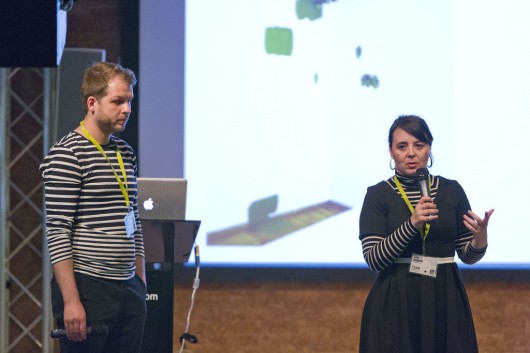Founded in 2007 by Asensio and Lorenz, TwoPoints consider themselves an “International Bureau of This and That”. True, yes, with “this” being the exceptional design work they have produced to date and “that” being the network of creativity; amongst it fellow designers, musicians, photographers, developers, writers, as well as academics and students. Studio aside, design education and thinking is a big part of what they are about.
Established educators as much as they are practitioners, they were both dissatisfied with the ideas and approach across the various curriculums. They began to wonder and question how design should be taught in the present day. Not everything can be learnt solely through studying, and with design, there needs to be a substantial amount of doing. So they started Design Werkstatt.
Last year TwoPoints featured as speakers at Typo Berlin. This year they are back to show and tell the outcomes from their Design Werkstatt three day workshop – “Tactile Systems: Tools for Flexible Visual Systems”.
The aim of the workshop was to encourage and find new sources of inspiration and possibilities. To break the machine routine and revert back to hands-on manual processes. How can visual systems be built by using common and tactile materials such as paper, cardboard, wood, and found objects?

Lupi Asensio

Martin Lorenz
The brief was simple.
- Consider the basic elements of a system i.e background, colour, object.
- Select one or several non-modular common materials.
- Create a series of conditions and apply these materials and make a three dimensional “physical system”.
Experiments included: twisted tights, kaleidoscopes of boxed syrups, letters and ladders, shadows made with dots, and greenery across different planes, all of which still worked as functional design systems. What was interesting was the diversity in material choices and the differences in approach between the students.
The level of thinking and how far they pushed and explored ideas in such a short amount of time was also very impressive. It was also fantastic to see them up on stage presenting their own work.
Visual systems can, but do not necessarily have to lead to two dimensional corporate identities. Form, space and 3D ID’s. More of that please.










 Lupi Asensio and Martin Lorenz, organizers and teachers of DW, founded their studio TwoPoints.net in 2007 and live between Berlin and Barcelona, Foto: Alexander Blumhoff
Lupi Asensio and Martin Lorenz, organizers and teachers of DW, founded their studio TwoPoints.net in 2007 and live between Berlin and Barcelona, Foto: Alexander Blumhoff










